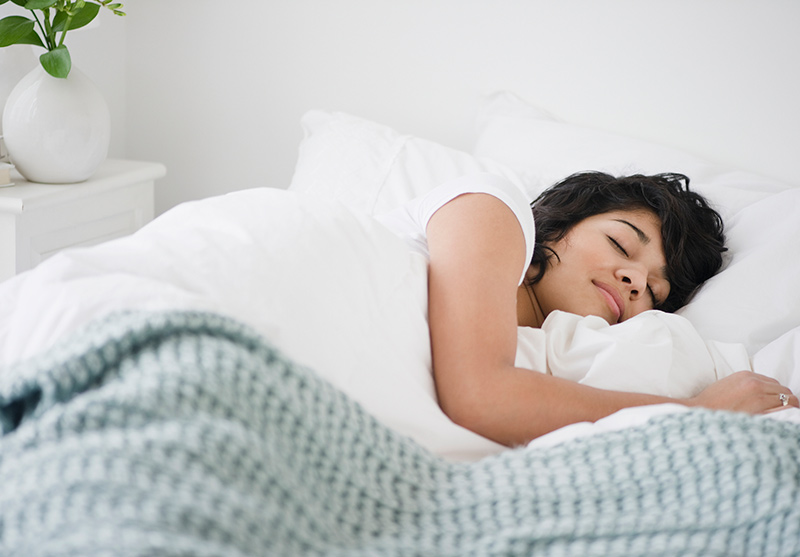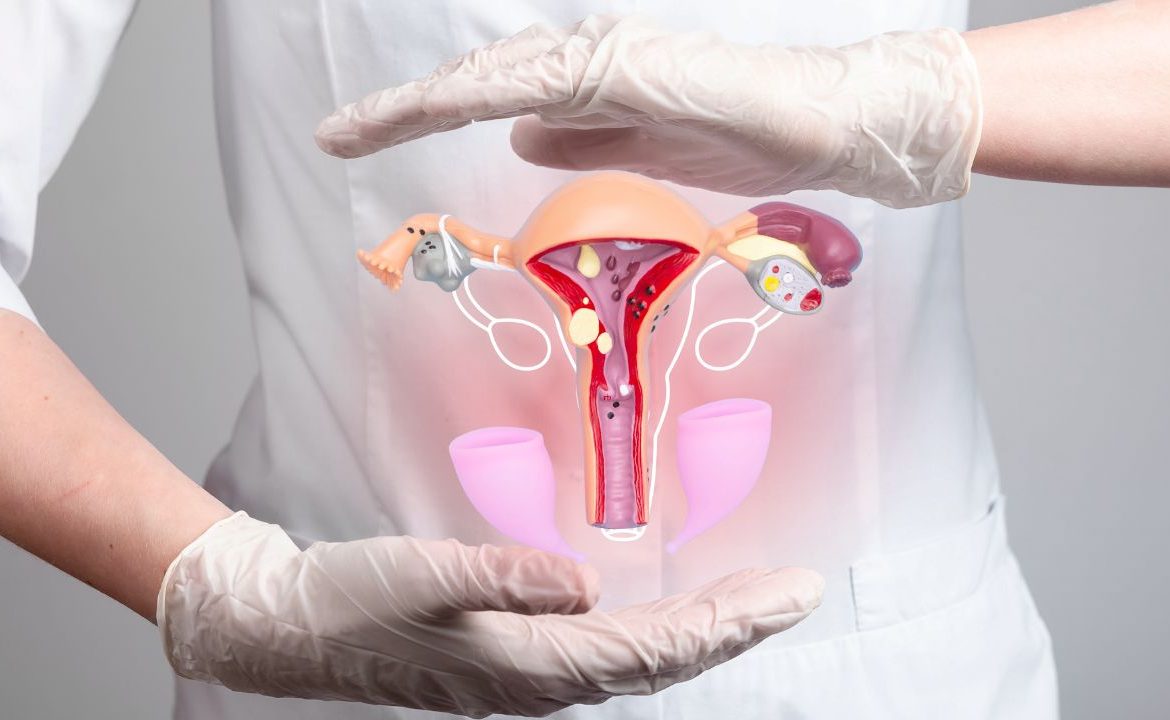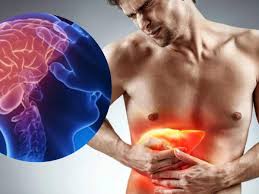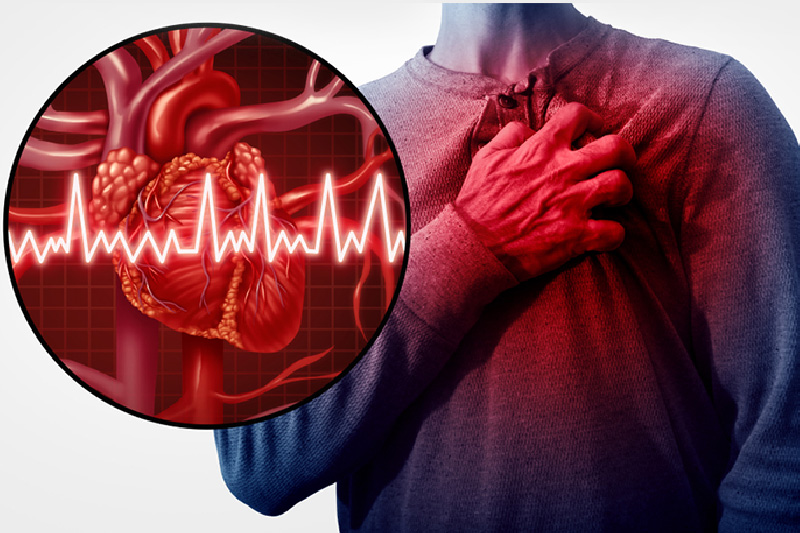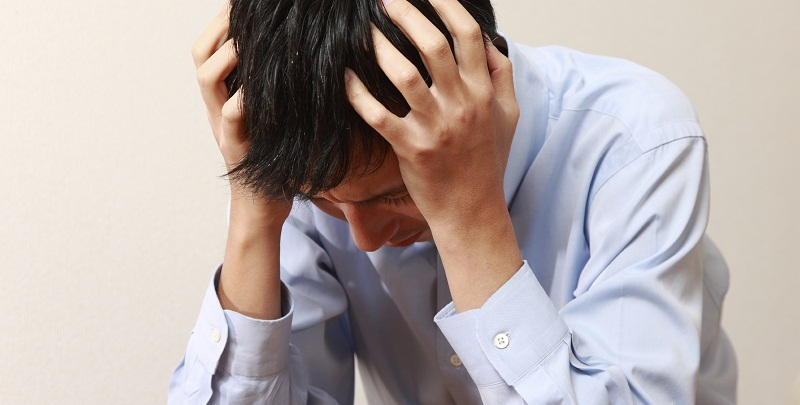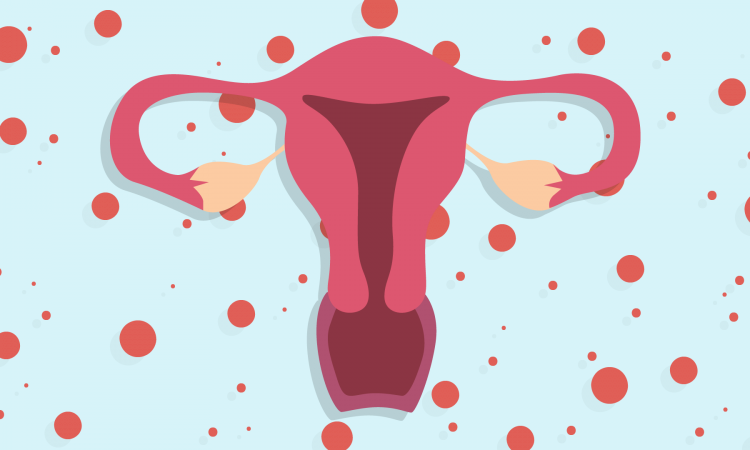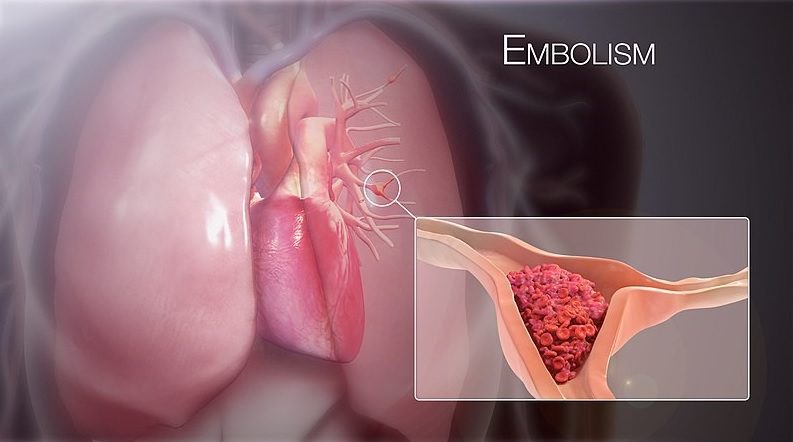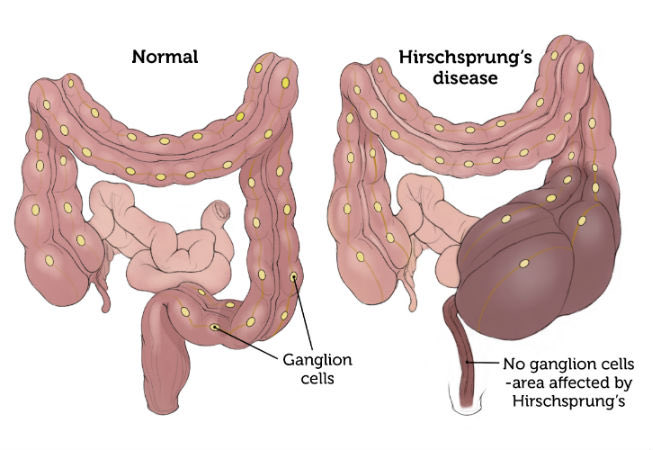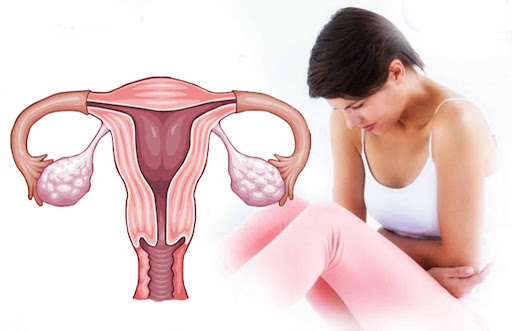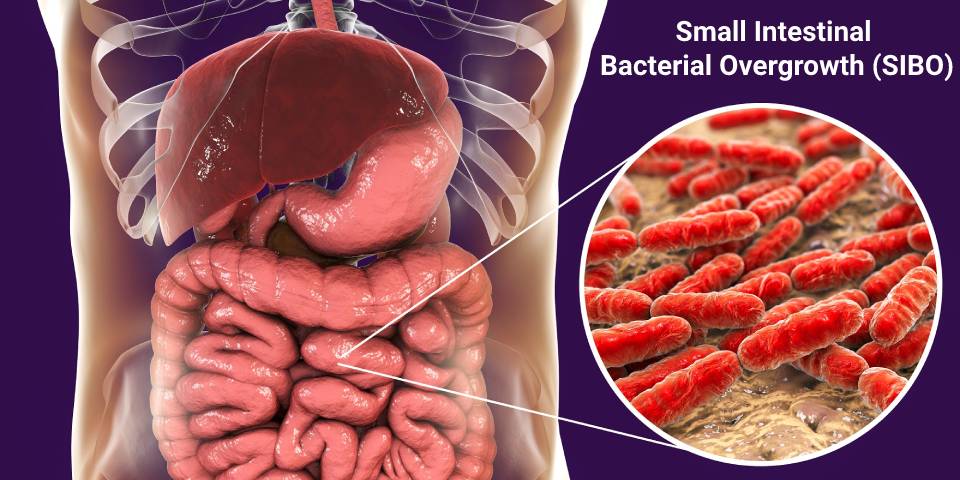Author Archives: Dr. Vaidya Karanvir Singh
SLEEP AND ITS AYURVEDIC APPROACH
- April 22, 2024
- Posted by Dr. Vaidya Karanvir Singh
- 0 Comment(s)
OVERVIEW :-
According to the Ayurveda ,the best time to wake up before sunrise and sleep before 10pm .when the kapha period has induced dullness in the body. It’s also important to have a gap of at least 2 hours between dinner and sleep time. The three types of dosha in ayurveda :- vata,pitta, kapha.these three dosha are responsible for good health . the dosha determine various function include sleeping .sleep is caused by increased kapha, insomnia is caused by vata and pitta dosha .In ayurveda sleep is compared with nidra .nidra is one among the three upstambha . it is also important as ahara. sleep is considered as a basic instinct of life which is essential for all living beings.
DEFINITION OF SLEEP:
When the mind gets exhausted or becomes inactive and the sensory , motor organs also becomes inactive then the individual sleep .During sleep our body enters into anabolic state that restores the body critical functions like immunity .
TYPES OF SLEEP :-
ACCORDING TO ACHARYA CHARAK :
1 . TAMOBHAVA :-
It is a type of sleep which is caused by increase in tamas guna .when tamas guna increase person will feel inside the shell of darkness .it can be natural whwn it occurs at night time .
2. SHLESHMA SAMUDHBHAVA NIDRA :-
It is a type of sleep which is caused by kapha dosha . kapha is said to be predominant in childhood. Children sleep more than a adult .
3. MANAH SHARIRA SHRAMA SAMBHAVA NIDRA :-
It is a type of sleep which occurs when there is exhaustion of mind and body.
- AGANTUKI NIDRA :-
It is caused by the externally such as effect of some medicines , injury etc.
- VYADHYANUVARTINI NIDRA :-
It is a type of disease which is caused by complication of some disease such as sannipataj jwar
- RATRI SWABHAVA PRABHAVA NIDRA :-
It is a type of sleep comes naturally at night time and it is healthy kind of sleep .
EFFECT OF DOSHA ON SLEEP :-
6-10 AM, PM :- KAPHA DOSHA is dominant . In which prithvi (earth) and jal (water) elements is involved . In stomach food gets mixed with digestive juices and initial stage of digestion sets in it. There is heaviness in head ,eyes and wole part of body which makes sleep easier. Most part of relaxation happened this time .
11-2 AM,PM: – PITTA DOSHA is dominant in which agni ( Fire) and jal ( water) elements is involved. Most part of the digestion and metabolism occurs at this stage .
3-6 AM, PM:- VATA DOSHA is dominant in which air (air) and space(akash ) elements is involved . 3-6 am stool and urine formation happens more at this stage .mind becomes more and more active at this time .
HOW MUCH SLEEEP IS ENOUGH ACCORDING TO AYURVEDA :-
Sleep according to ayurveda varies as per the prakriti of person .vata prakriti person requires more sleep .pitt prakriti person require moderate sleep .kapha prakriti person will require less time for sleep . in addition the mental status of person , health condition , age , determine how much sleep require for a person . 6-8 hours of sleep require for a healthy person.
BENEFITS OF SLEEP:-
- It provides nouriushment and strength .
- It can helpful in improving concentration.
- It can provide good health and happiness to the body.
- Reduced focus on negative things.
WHY DAYTIME SLEEP IS CONTRAINDICATED:-
Day time sleep is good in summer season because nights are shorter during summer and vata dosha increases . In other season if person sleep in day time they will suffer from ajirna roga (indigestion) .
INDICATION FOR SLEEP IN DAY TIME :-
- If someone has been suffering from any injury or disease can sleep during the day time .
- People with weakness.
- People who work at night time.
- Elder or young children
AYURVEDIC TIPS FOR A GOOD SLEEP :-
- Fix your times to wake and sleep .
- Increase kapha food( which are sweet in taste) intake at bedtime if suffer from insomnia .
- Padabhyanga (massaging your feet).
- Listening to gentle and calming sounds .
- Eat boiled rice with yoghurt .
- Sleeping area is a comfortable clean and free from noise.
- Taking a hot shower or a relaxing bath.
- Make lunch is biggest meal of the day :-
- At noon when the sun is highest in the sky , the agni is also higher at that time and it is better to process a big meal .
- At evening ,agni is weaker the problem will that is when the people is eating a big meal in the evening .agni can not digest the food easily or cause sleep disturbance .
- Night time is the best time to rest , recharge and repair. If people take a big meal at dinner time the the body needs more work hard to digest the food .so, that aim for bigger lunch and lighter dinner abd finishing a minimum time of 3 hours before bedtime.
- Avoid caffeine , alcohol and nicotine late in the day .
- Avoid bright light in the evening and expose yourself to sunlight in the morning .
- exercise 20-30 minutes a day
GOOD FOODS TO EAT BEFORE SLEEP :-
- Almonds are a good source of the sleep which regulates the melatonin hormone .
- Kiwi fruit are rich in serotonin and antioxidants they help to improve sleep quality .
- Wallnuts are also improve sleep quality .
- Milk contains melatonin and tryptophan which provides good sleep when drink at bed time.
PRURITUS VULVA
- April 22, 2024
- Posted by Dr. Vaidya Karanvir Singh
- 0 Comment(s)
Pruritus (or pruritis ) means itching , Vulva means female genitalia.
DEFINITION
- Pruritus Vulvae commonly known as vulvae itching . it refers to itching of the external female genital area known as the vulva.
- The itching can range from mild to severe .
- This condition can be caused by a variety of factors including infections , skin conditions , hormonal changes , allergic reactions and irritants.
CAUSES OF PRURITUS VULVAE
- Infections such as Candida albicans , bacterial vaginosis , genital viral warts , pinworms , cytolytic vaginosis or sexually transmitted infections (STIs) .
- Contact Dermatitis : Allergic reactions to soaps , perfumes , detergents or fabrics that come into contact with the vulva can lead to itching.
- Skin conditions : Eczema ,Psoriasis, lichen sclerosis .
- Allergic contact dermatitis
- Nerve disorders : Conditions like neuropathy can cause abnormal nerve sensations
- Other conditions such as Diabetes , thyroid disorder or certain cancer can cause itching in the vulvae area.
SYMPTOMS OF PRURITUS VULVAE
- Itching
- Redness : The skin of the vulva may appear red or inflamed , especially in cases of prolonged scratching or irritation.
- Swelling
- Burning sensation
- Discomfort or pain
- Changes in skin texture : The skin of the vulva may become thickened or scaly in response to chronic itching and irritation.
- Vaginal discharge.
Role of Ayurveda for Pruritus Vulvae
- In ayurveda pruritus vulvae is referred as “Yoni kandu” . A condition under Kaphaja yonivyapath. kapha dosha is vitiated.
HERBS
- Triphala
A (amalaki , bibhitaki and haritaki ) used to support digestion and detoxification.
- Neem
Neem is known for its antimicrobial and anti-inflammatory properties.
- Aloe vera
Aloe Vera gel is cooling and soothing , making it a common remedy for skin irritations. It may be applied topically to the vulva to reduce itching and inflammation.
- Turmeric
Turmeric is a anti-inflammatory and antiseptic herb. It may be taken internally or applied topically to help reduce inflammation and itching.
- Guduchi
Guduchi support the immune system and reduce inflammation.
HOME REMEDIES
- Warm water sitz bath : Soaking in a warm water sitz bath for 10 to 15 minutes can help soothe itching and irritation.
- Cold compress : Applying a cold compress or ice pack wrapped in a clean cloth to the vulva can help reduce itching and inflammation.
- Losses cotton clothing : Wearing loose, cotton undergarments and clothing can help keep the area dry and reduce irritation.
- Avoid irritants : Avoid using scented soaps, perfumed products and harsh chemicals in the genital area as they can irritate the skin.
- Apple cider vinegar : Diluting apple cider vinegar with water and applying it to the vulva with a cotton ball help restore the natural pH balance of the skin and reduce itching.
- Coconut oil : Applying virgin coconut oil to the vulva can help moisturize the skin and reduce itching and irritation.
- Yogurt : Eating plain , unsweetened yogurt applying it topically to the vulva help restore the natural balance of bacteria in the genital area and reduce itching.
- Proper hygiene : Practice good hygiene , including gently washing the genital area with mild soap and water and patting it dry.
- Stay hydrated : Drinking plenty of water can help keep the skin hydrated and reduce itching.
DIETARY CHANGES
- Anti-inflammatory foods : Include foods that are rich in anti-inflammatory compounds such as fruits , vegetables , whole grains , nuts , seeds etc.
- Avoid irritants : Certain foods may trigger or worsen symptoms . common irritants include spicy foods , caffeine , alcohol and acidic foods (like citrus fruits and tomatoes).
- Probiotics : Incorporate probiotic – rich foods such as yogurt with live cultures , kefir , kimchi to help maintain a healthy balance of gut bacteria .
- Omega -3 fatty acids : Foods rich in omega- 3 fatty acids such as flaxseeds , chia seeds , walnuts and fatty fish as they have anti-inflammatory properties that help reduce itching and inflammation.
- Avoid processed foods.
- Stay Hydrated.
LIVER CIRRHOSIS HOME REMEDIES
- April 22, 2024
- Posted by Dr. Vaidya Karanvir Singh
- 0 Comment(s)
DEFINITION
Liver cirrhosis is a chronic liver disease characterized by the replacement of normal liver tissue with scar tissue , leading to progressive loss of liver function.
FUNCTIONS OF LIVER
- Liver helps in metabolism
- It helps the immune system by removing bacteria and toxins from bloodstream.
- Bile production : It produces bile to help absorb fats including cholesterol and fat- soluble vitamins.
- The liver stores vitamins , minerals and glycogen.
- Detoxification : the liver helps remove toxins , drugs and other harmful substances from the blood.
CAUSES OF LIVER CIRRHOSIS
It is typically caused by long-term liver damage from various conditions such as:
- Chronic alcoholism
- Hepatitis B and C infections
- Fatty liver disease
- Obesity
- Autoimmune hepatitis
- Bile duct disorders : conditions that affect the bile ducts such as primary biliary cholangitis and primary sclerosing cholangitis can lead to cirrhosis.
- Genetic disorders : Such as hemochromatosis , wilson’s disease and alpha-1 antitrypsin deficiency can cause cirrhosis.
- Non -alcoholic fatty liver disease
SYMPTOMS OF LIVER CIRRHOSIS
- Fatigue and weakness
- Loss of appetite
- Nausea and vomiting
- Weight loss
- Abdominal pain or tenderness
- Swelling in the legs , ankles or abdomen (edema
- Jaundice
- Itchy skin
- Spider- like blood vessels on the skin (spider angiomas)
Management of Liver Cirrhosis in Ayurveda
- According to Ayurveda Liver is known as Yakrit . Liver Cirrhosis is understood as a condition of Pitta imbalance and is known as “Yakrit vriddhi.” The Pitta Dosha affects the fire element or agni and the enzyme activities which are responsible for digestion, absorption and metabolism.
Herbal Remedies
- Bhumyamalaki (phyllanthus niruri)
This is known for its hepatoprotective properties , it helps protect the liver from damage and promotes regeneration of liver cells.
- Kutki (picrorhiza kurroa)
A bitter herb that supports liver function and helps reduce inflammation in the liver.
- Punarnava (boerhavia diffusa)
It helps reduce swelling and fluid retention in the body .
- Triphala :
A combination of three fruits (amalaki , bibhitaki and haritaki) that is used to cleanse the liver and improve digestion.
HOME REMEDIES
- Dandelion :
Dandelion root tea or supplements help improve liver function and promote bile flow and digestion.
- Milk thistle :
It has antioxidant and anti-inflammatory properties that help protect liver cells.
- Turmeric :
Curcumin is the active compound in turmeric has anti-inflammatory and antioxidant effects.
- Green tea :
Green tea is rich in antioxidants called catechins which help protect the liver from damage .
- Apple cider vinegar :
- It help cleanse the liver and improve its function. It can be consumed diluted in water.
- Avoid alcohol and maintain healthy diet.
- Drinking plenty of water.
MYOCARDIAL INFARCTION AND ITS AYURVEDIC TREATMENT
- April 22, 2024
- Posted by Dr. Vaidya Karanvir Singh
- 0 Comment(s)
It is a condition in which blockage of blood flow to the heart muscles .A Blood clot blocks blood flow to the heart muscles. It is usually the result of blockage in one or more coronary artery. Myocardial infarction is the irreversible damage of myocardial tissue caused by prolonged ischemia and hypoxia.
CAUSES OF MYOCARDIAL INFARCTION:
- Coronary atherosclerosis
- Coronary artery spasm
- Tobacco
- Smoking
- Stress
- Chronic kidney disease
- Diabetes
- Hypertension
- Drug abuse
- Alcohol
- Family history of ischemic disease
TYPES OF INFARCTION:
According to the anatomic region of left ventricle involved:
- Anterior
- Posterior
- Septal
- Circumferential
- Lateral
- Combination : Anteriolateral, Posterolateral, Anteroseptal
According to degree of thickness of ventricular wall involved:
- Trans mural
- Laminar
SYMPTOMS OF MYOCARDIAL INFARCTION:
- Pressure or tightness in chest
- Shortness of breathe
- Pain, stiffness or numbness in the upper body
- Cold sweat
- Lightheadedness
- Dizziness
- Fatigue
- Stomach discomfort
- Bluish discoloration of lips, hands or feet.
- Irregular heartbeat
- Sleeplessness
- Jaw pain
- Anxiety
COMPLICATION:
- Arrhythmia
- Cardiac aneurism
- Cardiogenic shock
- Pericarditis
- Thrombosis
- Ventricular septal defect
INVESTIGATION:
- ECG
- Echocardiography
- Coronary angiography
- Lipid profile
- MRI
- PET scan
PREVENTION OF MYOCARDIAL INFARCTION:
- Quit smoking and tobacco
- Regular exercise
- Reduce alcohol consumption
- Maintain a healthy weight
- Limit salt intake
- Follow a DASH diet
- Manage stress
- Control your cholesterol or blood pressure level.
FOOD GOOD FOR HEART:
- Garlic
- Walnuts
- Orange
- Prunes
- Berries
- Avocados
- Beans
- Tomato
- Almond
- Olive oil
- Carrots
- Tofu
- Sweet potato
- Apple
FOODS TO BE AVOID
- Refined sugars
- Processed food
- Oily food
- Cookies and pastries
- Soft drinks
- Red meat
AYURVEDIC APPROACH OF MYOCARDIAL INFARCTION:
In ayurveda it is compared with Hridya roga. When the vata dosha gets aggravated and disturbs rasa dhatu in the body than there is a blockage in the arteries that leads to to the heart. Kapha dosha also plays a role in development of this disease. The main aim is to restore digestion of rasa dhatu . with a weak rasa dhatus, the digestive fire becomes imbalanced which may result in release of toxins .Toxins reach in the heart and cause blockage in channels .
PATHYA AHARA:
- Shali dhanya(Rice)
- Mudga(Green gram)
- Yava(Barley)
- Jangala mamsa rasa( Meat soup of animals living in desert areas)
- Bitter gourd
APATHYA AHAR:
- Excessive amount of sour things
- Butter
- Avoid heavy foods
- Excessive thinking
- Stress
- Excessive speaking
HERBS GOOD FOR HEART:
Arjuna:
It pacifies kapha and pitta dosha . It works on plasma and helps in maintaining the channels of body
Puskarmoola:
This helps in lowering blood pressure and cholesterol. It has anti-Anginal or anti ischemic properties.
Lasuna:
It prevents cell damage, regulating cholesterol and lowering blood pressure
Amalki:
It is good for heart health because it contains vitamin –C. It provides strength to arteries of heart.
Jatamansi:
It helps in soothing problems like palpitation and restlessness.
Guggulu :
It may reduce triglyceride level, total cholesterol and LDL cholesterol.
Ashwagandha :
It promotes health and longevity. It acts as a rasayan. It has anti-anxiety and stress relieving effects .It reduces cortisol levels in our body.
CHANDIGARH AYURVED CENTRE MEDICATION FOR THE TREATMENT OF MYOCARDIAL INFARCTION:
- Active Plus Tablet:
CAC active plus Tablet is a pure herbo-mineral formulation prepared from best quality of herbs. This tablet is best for person mental and physical health, also helps to boost up the immunity. The herbal ingredients present in these tablets are used to maintain person’s health and refreshes the mind and body. These tablets improves digestion, eliminates constipation, stress, nourishes brain, acts as antioxidant, analgesic, anti-inflammatory, etc.
Recommended dosage: Take 1 tablet twice daily with normal water.
- Heart Up Tablet:
Heart Up Tablet is a unique formulation and is very effective in the treatment of heart diseases and related symptoms. It acts as a cardioprotective and anti-arrhythmic medicine providing strength to the heart muscles and maintains heart rate. This medicine is very useful in relieving pain and maintains blood optimum viscosity.
Recommended dosage: Take 1 tablet twice daily with normal water.
- Noni Capsule:
Noni capsule contain standardized extract of herb Noni (Morinda citrifolia) that is good for overall health of heart. These capsule deals with the blocked arteries of the heart. The formation of plaque is overcome with the use of these herbal capsules.
Recommended dosage: Take 1 capsule twice daily with normal water.
- Nerve up tablet :
CAC Nerve up tablet is a herbo-mineral tablet and is purely ayurvedic formulation. CAC Nerve up tablets help in balancing the vata doshas. It reduces kapha dosha, and acts as nervine stimulant. It shows effective results in improving the central nervous system. It contains natural ingredients like shudha kuchala, shudha shilajeet, praval pishti, shankh bhasma etc. These contains natural vatahar properties and helps in curing vata diseases.
Recommended dosage: Take 1 tablet twice daily with normal water.
- Kapha Balance tablet:
CAC Kapha tablet is a healthy blend of herbs formulated to balance Kapha doshas without aggravating Pitta and Vata doshas. It can also be used to alleviate any temporary Kapha imbalance. It is very effective in Kapha season that is late winter and spring. It consists of warming and astringent herbs that help to balance the system throughout the cold season. The main use of Kapha tablets is to remove excess Kapha doshas from the system and helps in the management of weight, healthy lungs, and the immune system.
Recommended dosage: Take 1 tablet twice daily with normal water.
ANXIETY DISORDERS
- April 16, 2024
- Posted by Dr. Vaidya Karanvir Singh
- 0 Comment(s)
WHAT ARE ANXIETY DISORDERS ?
- Anxiety disorders are a group of mental health conditions characterized by excessive and often irrational worry, fear, and nervousness.
- They can significantly impact a person’s daily life, leading to emotional distress and physical symptoms.
- This article provides an overview of anxiety disorders, their causes, symptoms, risk factors, preventive measures, and Ayurvedic management in a thousand words.
CAUSES OF ANXIETY DISORDERS:
- Genetic Predisposition: A family history of anxiety disorders can increase one’s risk of developing the condition, suggesting a genetic component.
- Brain Chemistry: Neurotransmitters, such as serotonin and dopamine, play a vital role in regulating mood and anxiety. Imbalances in these chemicals may lead to anxiety disorders.
- Trauma and Stress: Traumatic life events, such as physical or emotional abuse, can trigger anxiety disorders. Chronic stress is also a significant factor in their development.
- Personality Factors: Individuals with certain personality traits, such as perfectionism or high levels of neuroticism, may be more prone to anxiety disorders.
- Medical Conditions: Certain medical conditions, like thyroid disorders and heart disease, can be associated with anxiety symptoms.
SYMPTOMS OF ANXIETY DISORDERS:
Anxiety disorders manifest in various ways, and symptoms can range from mild to severe. Common symptoms include:
- Excessive Worry: Persistent and constant worry about situations or future events.
- Trouble concentrating and inability to think about anything else than the worry one’s focused on.
- Restlessness: Feeling on edge, jittery, or unable to relax.
- Rapid Heartbeat: Increased heart rate and palpitations.
- Muscle Tension: Experiencing muscle tightness or pain.
- Shortness of Breath: Difficulty breathing or a sensation of breathlessness.
- Sweating: Profuse sweating, especially in stressful situations. There can be trembling also.
- Gastrointestinal Issues: Nausea, diarrhea, or stomach discomfort.
- Panic Attacks: Sudden, intense surges of fear or discomfort, often accompanied by physical symptoms.
RISK FACTORS FOR ANXIETY DISORDERS:
- Gender: Women are more likely than men to experience anxiety disorders.
- Traumatic Experiences: A history of trauma or abuse can increase the risk.
- Family History: A family history of anxiety disorders or other mental health conditions.
- Chronic Stress: High levels of ongoing stress can contribute to the development of anxiety disorders.
- Substance Abuse: Alcohol or drug abuse can exacerbate or trigger anxiety disorders.
PREVENTIVE MEASURES FOR ANXIETY DISORDERS:
While anxiety disorders cannot always be prevented, certain strategies can help reduce the risk and manage symptoms:
- Stress Management: Learn stress-reduction techniques like mindfulness, meditation, and deep breathing exercises.
- Balanced Lifestyle: Maintain a healthy diet, regular exercise, and adequate sleep.
- Limit Stimulants: Reduce caffeine and alcohol intake, as these can exacerbate anxiety.
- Seek Support: Develop a strong support system and consider therapy or counseling for emotional well-being.
- Time Management: Effective time management can help reduce feelings of overwhelm and anxiety.
- Avoid Triggers: Identify and avoid situations or substances that worsen anxiety.
AYURVEDIC MANAGEMENT OF ANXIETY DISORDERS:
Ayurveda focuses on balancing the mind, body, and spirit. Here are some Ayurvedic strategies:
- Lifestyle and Diet: Ayurveda emphasizes a balanced lifestyle and a diet that suits your dosha (body type). Incorporate stress-reducing practices like yoga and meditation into your routine.
- Herbal Remedies: Ayurvedic herbs like Ashwagandha, Brahmi, and Jatamansi have been used to alleviate anxiety.
- Abhyanga: Regular oil massages, known as abhyanga, can help relax the nervous system and promote a sense of calm.
- Panchakarma: Detoxification therapies, such as panchakarma, can help in clearing toxins from the body and calming the mind.
- Pranayama: Breathing exercises, or pranayama, are an integral part of Ayurvedic practice and can help reduce anxiety.
- Marma Therapy: Marma points, similar to acupressure points, are stimulated to restore energy balance and alleviate emotional distress.
ANTI ANXIETY KIT
ALL PRODUCTS DESCRIPTION IN DETAIL:
- Vata Balance Tablet:
Vata balance tablet is a rejuvenating blend of herbs is specially formulated to balance Vata doshas without aggravating Pitta or Kapha doshas. It may be used to support overall health and well-being by Vata constitutions with or without food. For those with a dual constitution that includes Vata or a tridoshic constitution, it is an excellent formula for the Vata season, which in most parts of the world is autumn and early winter.
Recommended Dosage – Take 1 tablet twice daily with normal water.
- Brodley Syrup:
This syrup is prepared from the extract of various herbs that deal with the delusion, hallucination, disorganized behavior, lack of emotions, & inappropriate posture, etc. The syrup is prepared from herbs such as Shankhpushpi, Brahmi, Jatamansi, Ashwagandha, Shatavari, Saunf. These herbs show antioxidant, anti-inflammatory, immuno-modulator, & mind relaxant properties.
Recommended Dosage – Take 2 teaspoonful twice daily.
- Stress care tablet:
It is an amazing combination of natural herbs like Sarpgandha, Brahmi, Tagar, jatamansi. It helps to relieve stress conditions. They help to pacify the nervous system and also help to increase mental and physical performance. In Ayurveda when there is an imbalance of three energies i.e. Vata, pitta, and Kapha, it leads to disease. Vata has a sub dosha named prana doshas which regulates the sensory perception, brain, and mind. Tarpak Kapha subtype of kapha, governs cerebrospinal fluid, sadhak pitta subtype of pitta doshas governs emotions and their impact on the heart. So any vitiation of these doshas leads to stress. It act as Anti-depressant, relieves Insomnia, Anxiety.
Recommended Dosage – Take 1 tablet twice a day with normal water.
- Brain Relaxant Churna:
This churna is pure Ayurvedic which helps to rejuvenate the brain cells, improves memory, give strength to the body, & increases the concentration by calming down the brain. It is prepared from herbs that show calming effect on brain and gives you relaxation. Brain relaxant churna shows antioxidant, Neuroprotective, carminative and anti-inflammatory properties. Ingredients present in this churna are Amla (Emblica officinalis), Sonth (Zingiber officinale), Pippali (Piper longum), Marich (Piper nigrum), Haldi (Curcuma longa), Bala (Sida cordifolia), Suddha Gandhak, Lauha Bhasma. It helps to Maintain blood sugar level, Anti-depressant, Insomnia, Increase Haemoglobin levels, Cures indigestion, Helpful in Ulcerative colitis, and Nerve tonic. It helps in dealing with health conditions such as feeling delusion, hallucinations, disordered thinking, disabling, & impair daily functioning related to schizophrenia patients.
Recommended Dosage – Take 1 tablespoon of this churna twice daily.
- Mann Mitra tablet:
Mann Mitra tablet is herbal and purely ayurvedic medicine. It is used in Ayurvedic treatment for psychiatric conditions and help to balance all the three doshas of body i.e vata, pitta, kapha. CAC Mann Mitra tablet improves intelligence and speech problems. It is helpful for making the nervous system strong and nerves as well. It contains various herbs like Bala, Vacha, Shankhpushpi, Nagkeshar etc that help you fight insomnia, anxiety, and stress. It works as a antioxidant, anti depressant, immuno booster, anti epileptic and as neuro protective drug.
Recommended Dosage – Take 1 tablet twice a day with normal water.
MENORRHAGIA
- April 16, 2024
- Posted by Dr. Vaidya Karanvir Singh
- 0 Comment(s)
Introduction
Menorrhagia is also known as abnormal uterine bleeding or heavy periods. A woman with healthy period loss about 40-60 ml blood per period If the amount is more than 80ml and the duration is more than 7 days is considered menorrhagia. Heavy bleeding during the menstrual cycle affects the physical, emotional, day to day activities, social life, occupation, sexual life and maternal life.
Causes of menorrhagia
Hormonal imbalance: It cause of menorrhagia as it leads to an overdevelopment of endometrium, which result in heavy period flow.
- PCOS
- Thyroid disorders
- Low progesterone levels
- Menopause and Pre-menopause
- Early years of menarche
- Obesity and High body fat
Health conditions and medications
- Intrauterine device
- Birth control pills
- Blood thinning medications
- Genital TB
- Ovarian tumors
- Uterine Fibroids
- Miscarriage
- Infection in uterus or vagina
- Endometriosis
- Excessive stress
- Nutritional deficiency
- Endocrinal disorder
- Genetic bleeding disorders
Sign and symptoms
- Heavy bleeding
- Having large blood clots
- Soaking blood through sanitary pads every hours
- Need double pad at a time in order to control the bleeding
- Having periods that disrupt daily functioning
- Fatigue
- Having period for longer than a week
- Anemia
- Shortness of breath
- PMS symptoms, Menstrual cramps or period pain in the abdominal region
How to diagnose Menorrhagia
- Pap smear
- MRI
- Endometrial biopsy
- Hysteroscopy
- Sonohysterogram
- Ultrasound scan
- Complete blood test
Ayurvedic view of menorrhagia
According to Ayurveda abnormal uterine bleeding is classified as Asrigdara, which means heavy vaginal bleeding during, before, or after the menstrual cycle. Aggravated dosha Apan vayu, Vyan vayu, and Pitta dosha and dushya as Ras dhatu and Rakta dhatu
In Ayurveda it also refer to Raktapradhara
Ayurvedic treatment for menorrhagia
Ayurveda treatment of heavy periods focuses on the diet or lifestyle modifications to balance of the aggravated doshas.
Treatment to balance down pitta dosha and Rakta
Stambhana (Blocking therapy)
Sheetala upachara
Sheetala annapana
Ayurvedic herbs for Menorrhagia
Ayurvedic herbs are highly effective in treating heavy periods. They naturally balance hormones, detoxify to reduce inflammation and thus reduce heavy bleeding or muscle cramps.
1. Amla
It helps to reduce menstrual bleeding or balance hormones. It has anti-inflammatory, antibacterial properties and also remove toxins from the body.
2. Licorice
It helps to reduce high estrogen and androgen level.
3. Ashoka
Bark of Ashoka acts as a tonic for uterus. It promotes ovulation, balance hormones and reduce high estrogen levels.
4. Lodhra
It is highly effective in a heavy period and to prevent formation of thick uterine lining. It helps to regulate ovarian hormones and improve fertility.
5. Shatavari
It nourishes the reproductive tissues and improves the fertility. And prevents blood loss due to heavy period and passage of large blood clots
6. Dandelion Flower
The bitter taste of dandelion is extremely useful to pacify pitta or kapha dosha. This helps to restrict heavy period with clots and prevents them from occurring in the long term.
Best foods to prevent heavy menstrual bleeding
- Take a lots of iron rich foods
- Include fresh vegetables in your diet
- Low intake of foods that have a high glycemic index
- Avoid excess salt, spices, sour foods or pickles
- Reduce use of caffeine, refined sugar, or cold drinks
- Stop the consumption of processed foods and packaged foods
- Avoid foods with a hot potency and hot temperature
- Reduce stress
- Avoid heavy exercise
- Practicing yoga and meditation
- Maintains sleep habit
Yoga
- Bhujangasana
- Vajrasana
- Balasana
- Apanasana
- Anulom vilom pranayama
Chandigarh Ayurveda Centre is the best center that treats menorrhagia of its root cause. CAC medicines for menorrhagia are
- Immuno Up Powder
- Feminine Care Tablet
- Makar Rasayan Tablet
- Stop Bleeding Tablet
PULMONARY EMBOLISM AND ITS AYURVEDIC TREATMENT
- April 16, 2024
- Posted by Dr. Vaidya Karanvir Singh
- 0 Comment(s)
INTRODUCTION
Pulmonary embolism is a medical condition in which there occurs blood clot in the blood vessels of lungs. It blocks the flow of blood and thus affecting oxygen levels of lungs. It happens when a clot present in some other part of the body such as arm or leg, moves through the veins and enters the lungs. Most of the blood clots come from deep veins of the legs in a condition known as deep vein thrombosis.
In some cases, multiple blood clots are involved. The portions of lung which do not get blood supply due to blockage of the concerned artery may die. This condition is known as pulmonary infarction. It further deteriorates the oxygen supply capacity of the lungs to the body.
There are various oral medications which are very helpful in pulmonary embolism. However, a nutritious diet and regular physical exercise can prevent it and beneficial in its management. If not treated on time, it can lead to lung or heart damage and later on death.
WHAT ARE THE CAUSES OF PULMONARY EMBOLISM?
Pulmonary embolism occurs because of the following causes:
- Pooling of blood in certain body parts such as arms or legs which occurs after a long period of inactivity like after surgery or during bed rest
- Injury to a vein due to any fracture or surgery
- Any cardiovascular disease such as atrial fibrillation, congestive heart failure, heart attack, etc
- Increase or decrease of clotting factors in blood
- Certain blood clotting disorders
WHAT ARE THE RISK FACTORS OF PULMONARY EMBOLISM?
Following are the factors which make a person more prone to pulmonary embolism:
- Suffering from deep vein thrombosis
- Taking oral contraceptives
- Inactive for long periods of time
- Having a recent trauma or surgery or fracture
- Cigarette smoking
- Increased body weight
- No physical exercise
- Having a history of heart attack or stroke
- Pregnancy
WHAT ARE THE SIGNS AND SYMPTOMS OF PULMONARY EMBOLISM?
The symptoms of pulmonary embolism vary from person to person, depending on the size of the clot and which part of lung is affected. The common signs and symptoms of pulmonary embolism are:
- Difficulty in breathing
- Pain in chest
- Sudden drop in blood pressure
- Fainting
- Rapid heart rate
- Presence of blood streaked mucus in cough
- Light-headedness
- Fever
- Pain or swelling in legs
- Cyanosis
HOW PULMONARY EMBOLISM CAN BE PREVENTED?
With some of the following simple steps, pulmonary embolism can be prevented:
- Doing regular physical exercise
- Elevating legs during night time
- Drinking plenty of water
- Not sitting for a long period of time
- Wearing compression stockings
HOW THE DIAGNOSIS OF PULMONARY EMBOLISM CAN BE MADE?
The diagnosis of pulmonary embolism is difficult, especially if a person is having lung or heart disease. The doctor will ask about the signs and symptoms to the patient. He will take his past medical history. He will do a thorough physical examination of the patient. He will suggest some tests for the evaluation of the disease like:
- Blood tests
- Ultrasound of leg
- CT scan
- Ventilation/perfusion scan
- Chest X-ray
- Pulmonary angiogram
MANAGEMENT OF PULMONARY EMBOLISM WITH THE MEDICATIONS OF CHANDIGARH AYURVED CENTRE
Here are some of the medications of Chandigarh Ayurved centre which are used for the treatment of pulmonary embolism:
1. Active Plus Tablet
CAC active plus Tablet is a pure herbo-mineral formulation prepared from best quality of herbs. This tablet is best for person mental and physical health, also helps to boost up the immunity. The herbal ingredients present in these tablets are used to maintain person’s health and refreshes the mind and body. These tablets improves digestion, eliminates constipation, stress, nourishes brain, acts as antioxidant, analgesic, anti-inflammatory, etc.
Recommended dosage: Take 1 tablet twice daily with normal water.
2. Noni Capsule
Noni capsule contain standardized extract of herb Noni (Morinda citrifolia) that is good for overall health of heart. These capsule deals with the blocked arteries of the heart. The formation of plaque is overcome with the use of these herbal capsules.
Recommended dosage: Take 1 capsule twice daily with normal water.
3. Nerve up tablet
CAC Nerve up tablet is a herbo-mineral tablet and is purely ayurvedic formulation. CAC Nerve up tablets help in balancing the vata doshas. It reduces kapha dosha, and acts as nervine stimulant. It shows effective results in improving the central nervous system. It contains natural ingredients like shudha kuchala, shudha shilajeet, praval pishti, shankh bhasma etc. These contains natural vatahar properties and helps in curing vata diseases.
Recommended dosage: Take 1 tablet twice daily with normal water.
4. Kapha Balance tablet
CAC Kapha tablet is a healthy blend of herbs formulated to balance Kapha doshas without aggravating Pitta and Vata doshas. It can also be used to alleviate any temporary Kapha imbalance. It is very effective in Kapha season that is late winter and spring. It consists of warming and astringent herbs that help to balance the system throughout the cold season. The main use of Kapha tablets is to remove excess Kapha doshas from the system and helps in the management of weight, healthy lungs, and the immune system.
Recommended dosage: Take 1 tablet twice daily with normal water.
5. Detox Premium Powder
This is the herbal formulation that consists of sudhyog tablet, shwet parpati, yavakshaar, akik pishti, jahar mohra, giloy satav, shukta pishti, etc. Intake of this wonderful remedy will balance the aggravated doshas and cleanse your body by removing the toxins from the body, as it also unblocks the passage and allows the blood to freely pass from the passage.
Recommended Dosage– Take 1 sachet twice daily with normal water.
6. Panchsakar Churna
This churna is very effective for varicose vein patients as it shows antioxidant, anti-inflammatory, laxative, and analgesic properties. It is a classical herbal churna prepared from ingredients like Shatapushpa, Balaharitaki, Shunthi, Swarnapatri, & Saindhav lavana. It helps in removing all toxins from the body and provides good results to patients of varicose vein.
Recommended Dosage– Take 1 teaspoonful at bedtime with warm water.
HIRSCHSPRUNG’S DISEASE
- April 12, 2024
- Posted by Dr. Vaidya Karanvir Singh
- 0 Comment(s)
DEFINITION
Hirschsprung’s disease is a rare condition that affects the large intestine (colon) and causes problems with passing stool. It occurs when nerve cells in the colon are missing , which leads to difficulty in passing stool.
CAUSES OF HIRSCHSPRUNG’S
Hirschsprung’s disease is caused by a lack of nerve cells in the muscles of the colon. Normally , these nerve cells control the muscles that push stool through the colon. Without these nerve cells , the muscles in the affected part of the colon can’t move stool effectively , leading to a blockage
SYMPTOMS OF HIRSCHSPRUNG’S
The symptoms of hirschsprung’s disease vary depending on the age of the person and the extent of the condition.
In new borns symptoms include :
- Failure to pass meconium (the first stool ) within 48 hours of birth .
- Swollen abdomen
- Vomiting often green or brown
- Constipation or difficulty passing stool.
In older infants and children symptoms include :
- Chronic constipation or difficulty passing stool
- Abdominal swelling or bloating
- Diarrhea , especially if a liquid stool bypasses the blocked part of the colon
- Slow growth
- Fecal incontinence (leaking stool)
COMPLICATIONS
- Enterocolitis
- Constipation and bowel obstruction
- Bacterial overgrowth
- Failure to Thrive
Diagnosis of Hirschsprung’s disease
- Physical examinations
- Barium enema
- Anorectal manometry
- x-ray
- Biopsy
ROLE OF AYURVEDA FOR HIRSCHSPRUNG’S DISEASE
In Ayurveda Hirschsprung’s disease refers to “pakwasayagata vata” and “vibandha”.
- Herbal Remedies
- Triphala : (Amalaki , Bibhitaki and Haritaki ) is ayurvedic remedy for digestive issues. It helps regulate bowel movements and promotes overall digestive health.
- Licorice (yashtimadhu) : Licorice is known for its anti-inflammatory properties and is often used to soothe the digestive tract. It can help reduce inflammation in the colon and promote healing.
- Ginger : Ginger help in digestion and can alleviate symptoms like bloating and gas.
- Fennel (saunf) : Fennel seeds help relieve gas and bloating and promote healthy digestion.
- Peppermint (pudina) : peppermint is known for its calming effect on the digestive system and can help reduce spasms in the colon.
Panchakarma (Ayurvedic detoxification therapies )
- Virechana (therapeutic purgatio)
- Basti (medicated enema)
Dietary changes
- Avoid foods that are spicy , oily , packed or processed that are difficult-to-digest foods.
- Eat Fiber – rich foods to promote regular bowel movements.
- Reduced intake of concentrated sugars and sugar alternatives
- Avoid flavored milk , ice-creams , custard , yogut.
Lifestyle Modifications
stress management techniques ( yoga , meditations)
- Regular exercise
- Proper sleep
DYSFUNCTIONAL UTERINE BLEEDING
- April 12, 2024
- Posted by Dr. Vaidya Karanvir Singh
- 0 Comment(s)
INTRODUCTION
Dysfunctional uterine bleeding is a female reproductive disorder in which there occurs vaginal bleeding in between the monthly periods or the periods are heavy and prolonged. It is also known as abnormal uterine bleeding. Normally, the menstrual flow lasts for about 5 days and occurs after every 21 to 35 days. The main reason for the occurrence of dysfunctional uterine bleeding is an imbalance of the sex hormones. The other possible causes can be uterine fibroids, polyps, etc. Females who are entering puberty and menopause have an imbalance of hormones leading to disturbed flow of bleeding.
There are some oral medications which help in management of symptoms of the disease. Good nutritious diet and regular physical exercise are also very beneficial in its management.
WHAT ARE THE CAUSES OF DYSFUNCTIONAL UTERINE BLEEDING?
There are several causes which are responsible for dysfunctional uterine bleeding. Following are the common causes of DUB:
- Hormonal imbalance
- Polycystic ovarian disease
- Hyperthyroidism or hypothyroidism
- Sedentary lifestyle
- Lack of physical exercise
- Uterine fibroids
- Polyps
- Cancer of uterus, cervix, endometrium, ovary, vagina
- Increased growth of endometrium
- Adenomyosis
- Inflammation of the cervix known as cervicitis
- Sexually transmitted infections such as gonorrhea, chlamydia, etc
- Liver disease
- Pelvic inflammatory disease
- Certain medications like aspirin, hormonal pills, etc
- Intrauterine devices
WHAT ARE THE SIGNS AND SYMPTOMS OF DYSFUNCTIONAL UTERINE BLEEDING?
The symptoms of dysfunctional uterine bleeding vary from person to person. Following are the common signs and symptoms of dysfunctional uterine bleeding:
- Heavy menstrual bleeding
- Vaginal bleeding in between the periods
- Prolonged vaginal bleeding
- Irregular menstrual cycle
- Abdominal bloating
- Pain in pelvis
- Light-headedness
- Fainting
- General body weakness
- Low blood pressure
- Pallor
- Increased number of sanitary pads
HOW DYSFUNCTIONAL UTERINE BLEEDING CAN BE PREVENTED?
Dysfunctional uterine bleeding can be prevented by taking some of the following steps:
- Eating green vegetables and fruits
- Doing regular physical exercise
- Maintaining healthy weight
- Stress management
- Doing yoga and meditation
HOW THE DIAGNOSIS OF DYSFUNCTIONAL UTERINE BLEEDING IS MADE?
The doctor will ask about the signs and symptoms of the disease to the patient. He will do a physical examination of the patient such as pelvic examination. He will take the past medical and family history of the patient. He will recommend some of the following tests to the patient:
- Pregnancy test
- Blood tests
- Thyroid tests
- Hormone levels test
- Ultrasound of pelvis
- Hysteroscopy
- Biopsy of endometrium
MANAGEMENT OF DYSFUNCTIONAL UTERINE BLEEDING WITH THE MEDICINES OF CHANDIGARH AYURVED CENTRE
Here are some of the medicines of Chandigarh Ayurved centre which are used for the treatment of dysfunctional uterine bleeding:
1. Femine care tablet
It is a pure and natural remedy that contains various herbs extract that works on the female reproductive system and make it healthy. These tablets show antioxidant properties, anti-inflammatory and immuno modulater properties. It contains Ghritkumari , Muramakki, Sonth. It works in various diseases like pcod, bulky uterus, endometriosis, general female health, irregular menses, and uterine fibroids. It affects on Tridosha- balances Vata and Kapha.
DOSE– 1-2 tablets two times a day or as directed by physician.
2. Detox Premium Powder
This is a herbo-mineral preparation that contains ingredients like Parwal Pishti, Giloy satv, Shukta Pishti, Kamdudha Ras, Gandhak Rasayan, etc.
Parwal Pishti: This Pishti reduces inflammation, flaking, itching of the skin. The Pishti is composed of natural coral calcium processed with rose water.
Shukta Pishti: It helps to balance the Pitta dosha in the body. All signs and symptoms related to Psoriasis patients are managed with this article.
Giloy Satv: This satv is prepared from the herb Giloy (Tinospora cordifolia). The anti-inflammatory, antioxidant, and analgesic properties of this herb deal with psoriasis easily.
Kamdudha Ras: This herbal-mineral classical preparation balances Pitta dosha in the body.
Gandhak Rasayana: This herbal preparation is used since ancient times for all types of skin disorders.
Tal Sindoor: It contains ingredients like Shuddh parad, Aloe vera, Gandhak, etc that relieve redness in psoriasis patients.
Akik Pishti: This Pishti reduces all types of Pitta related disorder hence it gives good results in psoriasis.
Recommended Dosage: Take 1 sachet twice daily with plain water.
3. Pitta balance tablet
Pitta doshas is responsible for digestion, metabolism, blood quality, thirst, appetite, eyesight, skin color and quality, body temperature, and mental abilities of intelligence and courage. Pitta doshas is composed of a fire element that digests almost everything that a person eats or drink. The eaten food is transformed into energy for the body to use in various functions of the body.
Dosage-Take 1 tablet twice daily with plain water.
4. Women champion syrup
CAC Woman Champion is purely herbal and ayurvedic formulation. It is a very effective tonic for women and help to maintain their health. It balances all the doshas of body and also maintain hormone levels . It contains herbs like Lodhra, Manjishta, Ashok chaal, Punarnava, Shatavar, Bala, Daruharidra, Nagarmotha that help women typically with mood changes, stress, headache and pain. CAC Women champion helps in leading a life of minimum discomfort during those difficult days every month. It act as antioxidant, anti inflammatory, anti spasmodic, uterine tonic and immunity booster.
DOSAGE:2 Teaspoon twice daily after meals.
Small Intestinal Bacterial Overgrowth
- April 11, 2024
- Posted by Dr. Vaidya Karanvir Singh
- 0 Comment(s)
SIBO commonly known as “Small Intestinal Bacterial Overgrowth”, is a condition characterized by an abnormal increase in the number bacteria in the small intestine.
CAUSES OF SIBO
- Structural abnormalities : Any structural abnormalities or changes in the anatomy of the digestive system such as strictures or adhesions can create conditions for bacterial overgrowth.
- Impaired motility : Conditions that affect the movement of food through the digestive tract, such as muscular or nerve damage can lead to SIBO.
- Low stomach acid
- Immune system dysfunction
- Medications
- Underlying digestive disorders
- Dietary factors
SYMPTOMS OF SIBO
- Abdominal pain or cramping
- Bloating and distension
- Diarrhea
- Constipation
- Gas and flatulence
- Nutritional deficiencies
- Nausea
- Heartburn
RISK FACTORS
- Diabetes
- Crohn’s disease
- Parkinson’s disease
- Hypothyroidism
- Scleroderma
- HIV
AYURVEDIC MANAGEMENT FOR SIBO
- In Ayurveda SIBO (small intestinal bacterial overgrowth) is correlated with an imbalance in the three Doshas (vata , pitta and kapha ) mainly vata and pitta Doshas, digestive fire (Agni) and the accumulation of toxins (ama) in the digestive tract.
- According to Ayurvedic principles impaired agni can lead to incomplete digestion , which in turn can create undigested food particles that serve as feeding ground for bacteria in the small intestine.
Treatment in Ayurveda
- Treatment involves restoring balance to the Doshas and agni through dietary and lifestyle changes , herbal remedies and detoxification therapies.
Detoxification (Panchakarma therapies)
- Abhyanga (therapeutic oil massage)
- Swedana (herbal steam therapy)
- Basti (herbal enema)
HERBAL REMEDIES
- Turmeric
- Triphla
Triphala (amalaki , bibhitaki and haritaki ) that is traditionally used in Ayurveda to support digestive health. It improve digestion and reduce inflammation in the gut.
- Licorice (Glycyrrhiza glabra)
Licorice root is traditionally used in Ayurveda to support digestive health and reduce inflammation in the gut.
- Neem (Azadirachta indica)
Neem is known for its antibacterial properties and may help reduce the overgrowth of bacteria in the small intestine.
- Peppermint (Mentha piperita)
Peppermint oil is often used to help relieve symptoms of SIBO such as bloating , abdominal pain.
- Berberine-containing herbs
Berberine is a compound found in several herbs including barberry , goldenseal.These has antimicrobial properties and help reduce bacterial overgrowth in the small intestine.
Dietary changes
- Avoid eating oily , spicy , packed or processed food.
- Avoid Carbonated Beverages.
- Avoid intake of alcohol and caffeine.
- Avoid foods high in added sugar such as candies, cakes , and sugary beverages.
- Avoid high- FODMAP foods : These are carbohydrates that are fermentable by gut bacteria. These include onions , garlic , certain fruits (apples , pears , watermelon) , certain vegetables (cauliflower, broccoli , brussels sprouts)and legumes.
Lifestyle modifications
- Stress Management
- Regular Exercise
- Adequate sleep
- Yoga


